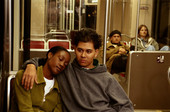- Skip Storing This Everyday Product in the Fridge Door
- Green Tea + B3 Pairing May Boost Brain Health
- Navigating Your Midlife Crisis: Embracing New Possibilities
- City Raccoons Showing Signs of Domestication
- Mapping the Exposome: Science Broadens Focus to Environmental Disease Triggers
- One Week Less on Social Media Linked to Better Mental Health
- Your Brain Changes in Stages as You Age, Study Finds
- Some Suicide Victims Show No Typical Warning Signs, Study Finds
- ByHeart Formula Faces Lawsuits After Babies Sickened With Botulism
- Switch to Vegan Diet Could Cut Your Greenhouse Gas Emissions in Half
1 in 10 Young Adults Admits to Sexual Violence


MONDAY, Oct. 7Nearly one in 10 teenagers and young adults has coerced or forced a peer to engage in some form of sexual activity, and violent pornography is partly to blame, according to a new study.
The study of more than 1,000 young people aged 14 to 21 found that 9 percent reported forcing or pressuring a peer to engage in sexual activity. They admitted to coercive sex, sexual assault and rape, most often involving a romantic partner.
Perpetrators were five times more likely to have been exposed to X-rated media that showed a person being physically hurt during sex, the study found.
“From a public health perspective, the violent pornography is something we need to be concerned about in terms of our young people,” said study co-author Michele Ybarra, president and research director of the Center for Innovative Public Health Research in San Clemente, Calif.
The young people also recounted a disturbing lack of consequences for their actions.
“Two out of three of our perpetrators said no one found out, so they didn’t get in trouble,” Ybarra said.
Further, nearly nine out of 10 perpetrators said they felt the victim bore full or partial responsibility.
The study, published Oct. 7 in the journal JAMA Pediatrics, involved a national sample of nearly 1,100 young people and focused specifically on perpetration of coercive and forced sexual behavior.
“We know a bit about youth who are victims of sexual violence, but we don’t know much at all about youth as perpetrators,” Ybarra said. “It’s important we know more if we’re going to reduce the sexual-violence rate.”
Three out of four victims were romantic partners. Acts of sexual violence reported by young people included:
- 8 percent kissed, touched or made someone else do something sexual knowing the other person did not want to.
- 3 percent coerced someone to have sex when they knew the other person did not want to.
- 3 percent attempted but were not able to force someone to have sex.
- 2 percent forced someone to have sex.
Perpetrators commonly are 16 years old when they commit their first act of sexual violence, but boys were overwhelmingly more likely to have their first episode at 15 years of age or younger, the survey found.
“It suggests there might be different reasons and ways in which males become perpetrators that are different from females,” Ybarra said.
Teens more often used coercive tactics rather than physical violence to force sex upon another person.
One-third of perpetrators said they argued with or pressured the person, while nearly two-thirds said they got angry or made the person feel guilty. Five percent of perpetrators reported using threats and 8 percent reported using physical force. Alcohol was involved in 15 percent of situations.
These tactics work because children are not getting enough education at home or at school regarding sexual relationships, said Susan Tortolero, a professor of public health at the University of Texas School of Public Health, in Houston.
“In this country, we aren’t talking at all about healthy sexual relationships,” Tortolero said. “Most of the time, we’re just telling kids not to have sex. People don’t know how to talk about sex, so almost always people are having sex without explicit consent. If we could teach kids how to give explicit consent, then they might be more protected.”
Dr. Angela Diaz, director of Mount Sinai Hospital’s Adolescent Health Center, in New York City, said sex education can teach potential perpetrators to respect others’ bodies and accept “no” for an answer, and can also teach potential victims to better recognize the tactics used to coerce sex.
“They may say, ‘Unless you have sex with me, I’m going to go have sex with someone else,'” Diaz said. “Young people have to learn that if their partner says that, maybe they’re better off if they do go somewhere else.”
Some focus also needs to be placed on the role of violent pornography, Ybarra said.
She said pornography itself does not seem to play a role. Comparable numbers of perpetrators and non-perpetrators said they had watched non-violent pornography.
But only 3 percent of non-perpetrators said they had watched pornography that involved violence, compared with 17 percent of perpetrators.
“It’s not pornography generally that seems to be concerning, it’s the pornography that portrays violence in sexual situations,” Ybarra said.
Ybarra said any education campaign also needs to focus on the role of bystanders who hear about sexual violence but do not report it.
“We need sexual-violence-prevention programs in the high school and middle school settings that tell young people, ‘If you hear something, if you know something, you must get involved,'” she said.
More information
For more information on sexual assault, visit the U.S. National Institutes of Health.
Source: HealthDay
Copyright © 2025 HealthDay. All rights reserved.










